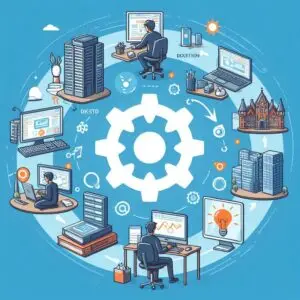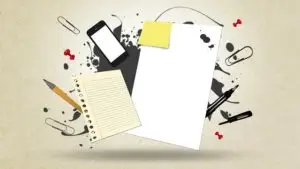The product life cycle (PLC) is the series of steps through which every product goes. Product life cycle stages- Introduction, Growth, Maturity and Decline.
As a Product Manager, this is what you constantly need to think about.
Check out the list of top 9 product management courses.
The lifecycle of your product is all you should ever care about. After all, nobody is more responsible for a successful lifecycle than a Product Manager.
Equally important, nobody is more responsible for a failed lifecycle than a Product Manager. This is a good time to understand the following differences –
Let us now go over the definition.

If you are looking to break into product management, check out how to become a Product Manager.
Product Life Cycle Definition
🚀 The Product Life Cycle: Not Just a Curve, But a Compass for Product Strategy
If you’ve been in product management long enough, you’ve probably seen the classic bell curve of the Product Life Cycle (PLC) more times than you’ve seen your own roadmap. But here’s the kicker: while the PLC might look like a simple four-stage model, it’s actually a strategic powerhouse—if you know how to wield it.
Let’s dive into the real-world dynamics of the PLC, stage by stage, with insights that even seasoned PMs will appreciate.
🧠 Beyond the Basics: Expert-Level PLC Tactics
- Multiple PLCs: Products often have mini-cycles within the main one—especially with major feature launches or market expansions.
- PLC as a Portfolio Tool: Map your entire product suite across the PLC to balance innovation and revenue.
- Data-Driven Transitions: Use leading indicators (e.g., declining feature usage) to anticipate stage shifts before they hit your P&L.
What works in the first stage may not work in the second stage.
Additionally, the way each stage behaves for a product depends on a variety of factors, including audience type, competition, pricing, etc.
Your job is to identify your product niche and deep dive into it.
See what works and what does not. Track your features. Learn Jira or any other tool. Check out the list of top 10 PM tools.
Product Life Cycle Stages
The four stages of the product lifecycle are –
- Introduction
- Growth
- Maturity
- Decline
We will cover each stage in detail.
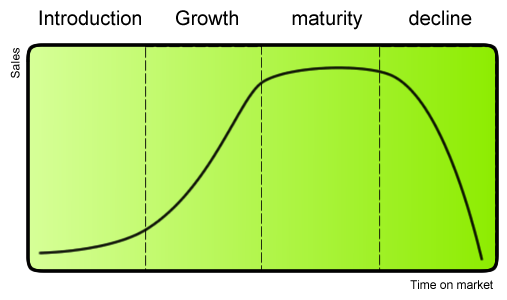
Source
It is important to fully understand each stage. Eventually, you need to prepare your product for each stage.
You takes weeks planning for the perfect launch, you use tools like Scrum or Kanban.
This is a good time to learn the top 15 benefits of Scrum. Not to forget the top 15 benefits of Kanban.
But it all comes down to your market launch.
🌱 1. Introduction: The High-Stakes Launchpad
What’s happening?
- Product is new to the market.
- Awareness is low.
- Costs are high (R&D, marketing, onboarding).
- Revenue? Still a dream.
PM Power Moves:
- Validate relentlessly: MVPs, beta programs, and early adopters are your lifeline.
- Evangelize: You’re not just managing a product—you’re building a movement.
- Metrics to watch: CAC, activation rate, early churn, NPS from early users.
Pro Tip: Don’t obsess over scale yet. Obsess over fit—product-market fit, that is.
The product life cycle introduction is where the magic begins.
This is when you launch your product. Keep it simple. Don’t forget the KISS principle.
It is in the initial phase, and you are trying to get customers. It will take time to build a loyal customer base.
During introduction, there are various product life cycle strategies that you can start with.
However, I would strongly recommend Google’s OKR framework.
📈 2. Growth: The Rocket Ride
What’s happening?
- Adoption is accelerating.
- Revenue is climbing.
- Competitors are waking up.
PM Power Moves:
- Double down on differentiation: What makes your product the choice?
- Scale infrastructure: Tech debt from the intro phase? Time to pay it down.
- Expand the funnel: New segments, new channels, new use cases.
Metrics to watch: MRR/ARR growth, retention cohorts, LTV:CAC ratio, feature adoption velocity.
Pro Tip: Growth hides problems. Keep your ear to the ground—especially with support and CS teams.
You need to be really agile here. Learn the basics of agile methodology.
Do whatever it takes to market your product.
Think like a consumer.
🧭 3. Maturity: The Plateau of Optimization
What’s happening?
- Market saturation.
- Growth slows.
- Margins stabilize.
PM Power Moves:
- Optimize ruthlessly: UX, pricing, onboarding—every friction point is a churn risk – Learn to communicate like a boss PM.
- Innovate adjacent: Think bundles, integrations, or even spin-offs.
- Defend your moat: Brand, ecosystem, switching costs—make them count.
Metrics to watch: Net revenue retention (NRR), churn rate, upsell/cross-sell success, CSAT.
Pro Tip: This is where great PMs shine. It’s not about launching—it’s about sustaining.
The key here is to be product agnostic.
🪂 4. Decline: The Strategic Crossroads
What’s happening?
- Usage drops.
- Revenue shrinks.
- The market moves on.
PM Power Moves:
- Decide boldly: Sunset, pivot, or reimagine?
- Harvest value: Can you automate support, reduce costs, or sell the IP?
- Learn and document: Every decline is a case study for future wins.
Metrics to watch: Active users, support costs, profitability per user, exit readiness.
Pro Tip: Decline isn’t failure—it’s evolution. The best PMs know when to let go.
Learn to influence without authority.
Sometimes, people talka about “product life cycle 5 stages”. When people say 5 stages, they are basically referring to a sub-part of the decline stage.
This fifth stage is basically the “refresh” stage when you bring about a new version of your existing product.
But, the more acceptable practice is to consider that refreshed product as a new product with a new lifecycle.
Product Life Cycle Video
I have covered the basic concepts of the PLC in the below video.
I go over all the stages and some very well known examples in this video.
Let us go over the examples now.
Product Life Cycle PPT – Product Management Life Cycle Stages
Here is a very detailed PPT presentation on the key concepts of the PLC.
This PPT contains examples of some well known failed products.
Check out the top 10 biggest failed products of all time.
https://www.slideshare.net/AayushJain83/product-life-cycle-with-examples-aayush-jain
Product Life Cycle Examples
Every single product that you hear about today can neatly fit into the product lifecycle described here.
In fact, every single product that has been ever produced or will be ever produced must follow the product lifecycle.
Let us go over some product life cycle stages examples.
Before we talk about more examples, I want to make a special mention for Nokia.
Nokia is considered a favorite example whenever the concept of product life cycle is discussed.

Source
Introduction Stage Examples (Product Life Cycle Examples 2025)
These products have not yet entered the popular imagination.
You hear about them on and off. But, the majority do not take these products seriously.
🔹 2025 Examples:
- Humane AI Pin – A screenless wearable AI assistant aiming to redefine mobile computing.
- Rabbit R1 – A pocket-sized AI device that uses natural language to perform tasks, still gaining traction.
- Nothing Phone (2a) – A budget-friendly smartphone with a unique design, targeting early adopters.
Key Traits:
- High development and marketing costs
- Low initial sales
- Focus on education and user feedback
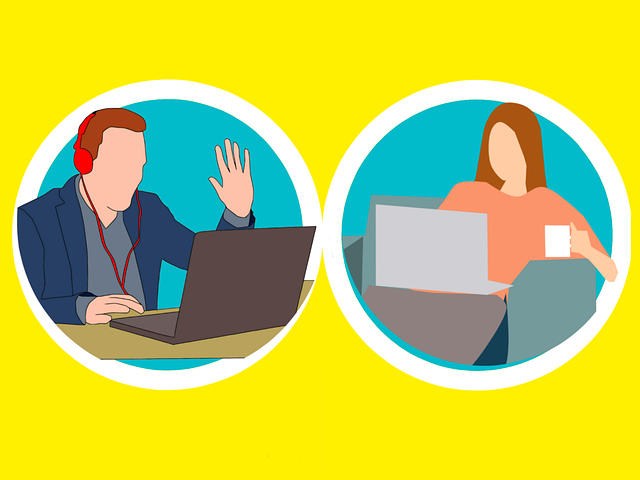
This is also a good time to understand the nuances of coronavirus product management.
Growth Stage Examples
Let us now talk about the product life cycle growth stage products.
These products were considered fringe till a few years back.
However, they have started to enter the popular imagination now.
When people are buying something new, these new age growth stage products are a factor. These occupy mindspace and are a viable alternative to the traditional products.
🔹 2025 Examples:
- Tesla Cybertruck – After initial delays, it’s now scaling production and gaining popularity.
- Apple Vision Pro – Apple’s entry into spatial computing is gaining traction among professionals and creators.
- BeReal – The social media app continues to grow with Gen Z, expanding its user base and features.
Key Traits:
- Rapid sales growth
- Market expansion
- Competitor entry and differentiation
Maturity Stage Examples (Mature Products Examples)
The maturity stage of product life cycle refers to products that almost all of us are very familiar with.
These products are fairly mature.
Expect them to decline within the next decade and give way to products that are considered new or experimental.
You may be so used to something today that you think you will use it forever.
But, history always repeats itself.
🔹 2025 Examples:
- iPhone 15 Series – Still a top seller, but innovation has plateaued; Apple focuses on ecosystem value.
- Netflix – A mature streaming platform facing stiff competition from Disney+, Prime Video, and others.
- Samsung Galaxy S Series – Continues to dominate Android flagship sales but with incremental upgrades.
Key Traits:
- Slowing growth
- High competition
- Focus on brand loyalty and cost optimization
Decline Stage Examples
This is the part of the product life cycle theory that most people simply choose to ignore.
If you are a 90’s kid, consider any product from that generation.
I’m sure you are already thinking of a few products here.
The decline stage products listed here are not very popular these days. These have all been replaced by something that is more user friendly and probably cheaper.
🔹 2025 Examples:
- Meta Quest 2 – Overshadowed by newer VR headsets like Apple Vision Pro and Meta Quest 3.
- DVD Players – Largely obsolete due to streaming dominance.
- BlackBerry-branded phones – Once iconic, now phased out completely.
- Waterfall model! – For all you agile nerds out there!
Key Traits:
- Declining revenue
- Reduced marketing investment
- Decisions on discontinuation or reinvention
However, some of these decline stage products have managed to reinvent themselves and are now available in a new avatar.
Expect rapid re-invention during the current crisis.
Learn to effectively navigate your way during the current crisis.
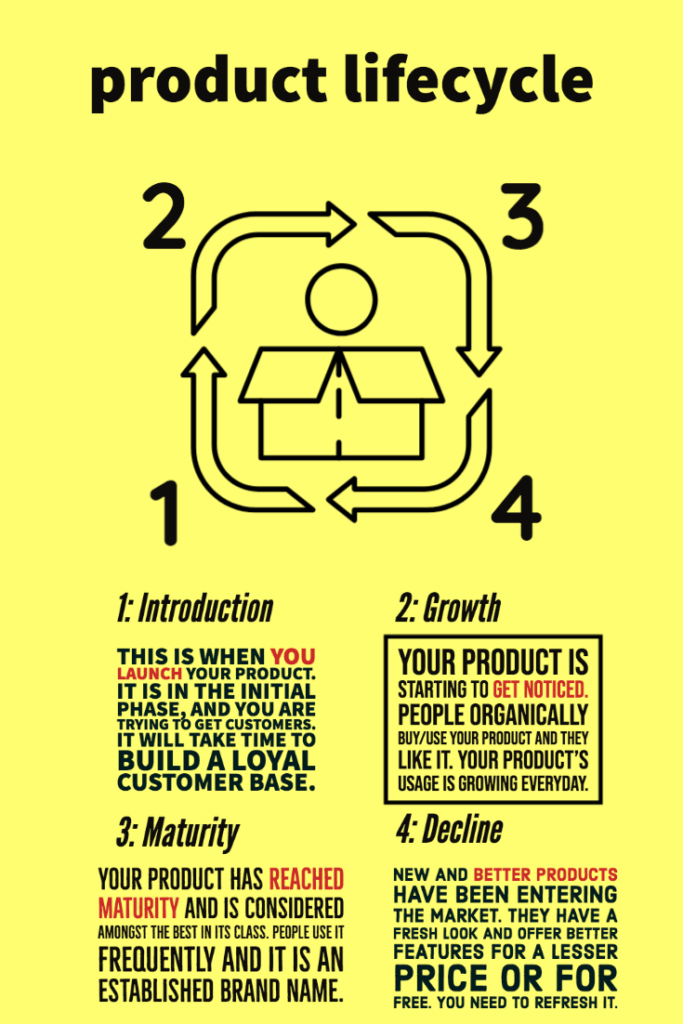
By now, I am sure that you will be able to grasp the importance of product life cycle management.
Facebook Trivia Quiz – How Well Do You Know Facebook?
Before proceeding to the product life cycle of Facebook, let us look at Facebook’s history.
Take this short quiz to see if you can get all the correct answers!
Facebook and the Product Life Cycle: A Strategic Analysis
The Product Life Cycle (PLC) is a foundational concept in marketing and strategic management, describing the stages a product undergoes from introduction to decline: Introduction, Growth, Maturity, and Decline. While the model has been critiqued for its limited predictive power, it remains a valuable heuristic for analyzing market dynamics. Facebook, now part of Meta Platforms Inc., offers a compelling case study of the PLC in action, particularly in the context of digital platforms and network effects.
Introduction Stage: 2004–2006
Facebook was launched in 2004 by Mark Zuckerberg and co-founders at Harvard University. Initially restricted to Ivy League institutions, the platform’s exclusivity created a strong early adopter base. This phase was characterized by low revenue, high development costs, and limited market penetration, aligning with traditional PLC theory. The platform’s viral growth was fueled by its novel approach to digital identity and social networking, which differentiated it from predecessors like Friendster and MySpace.
Growth Stage: 2007–2012
Facebook entered its growth phase as it expanded access to the general public in 2006 and introduced the News Feed, a transformative feature that increased user engagement. By 2012, Facebook had surpassed 1 billion users and launched its IPO. This stage was marked by exponential user growth, increasing advertising revenue, and global expansion. The platform leveraged network effects, where the value of the service increased with each additional user, a dynamic that accelerated its dominance.
Strategically, Facebook diversified its offerings by acquiring Instagram (2012) and WhatsApp (2014), preempting competitive threats and consolidating its position in the social media ecosystem. These moves exemplify the strategic imperatives of the growth stage, including market penetration, product development, and acquisition-led expansion.
Maturity Stage: 2013–2020
By the mid-2010s, Facebook had entered the maturity phase. User growth plateaued in key markets such as North America and Europe, and the platform faced increased regulatory scrutiny, privacy concerns, and competition from emerging platforms like TikTok. The maturity stage is characterized by market saturation, slower growth, and a shift toward efficiency and retention strategies.
Facebook responded by optimizing its advertising algorithms, expanding into video content, and integrating its messaging platforms. The company also rebranded as Meta in 2021, signaling a strategic pivot toward the metaverse—a move that can be interpreted as an attempt to extend the lifecycle of its core business by redefining its value proposition.
Decline Stage: 2021–Present?
While Facebook remains profitable, signs of decline are evident. Younger demographics increasingly favor platforms like TikTok and Snapchat, and daily active users in some regions have declined. The platform’s cultural relevance has diminished, and its brand perception has suffered due to misinformation scandals and data privacy issues. These trends align with the decline stage, where products face shrinking market share, reduced engagement, and reputational challenges.
However, Meta’s investment in AI and virtual reality suggests a strategic effort to reinvigorate the brand and delay decline, consistent with lifecycle extension strategies discussed in the literature.
As a bonus, check out the career path at Facebook and other top tech companies.
🎯 Final Thoughts: The PLC as a Strategic Lens
The Product Life Cycle isn’t just a model—it’s a mindset. It reminds us that products are living systems, and like all living things, they grow, mature, and eventually fade. But with the right strategy, timing, and courage, you can extend life, reinvent value, or gracefully exit.
So next time you’re staring at your roadmap, ask yourself:
Where is this product in its life cycle—and what does it need from me right now?
Learn the skills of effective product management.
If you are a software developer and are looking to contribute towards product management without switching to the field, then check out this guide on how to contribute towards product management.
A detailed product life cycle management PDF can be found here.
Follow me on Twitter for the latest updates.
Don’t forget to subscribe to my monthly newsletters on how to become a winning Product Manager.

